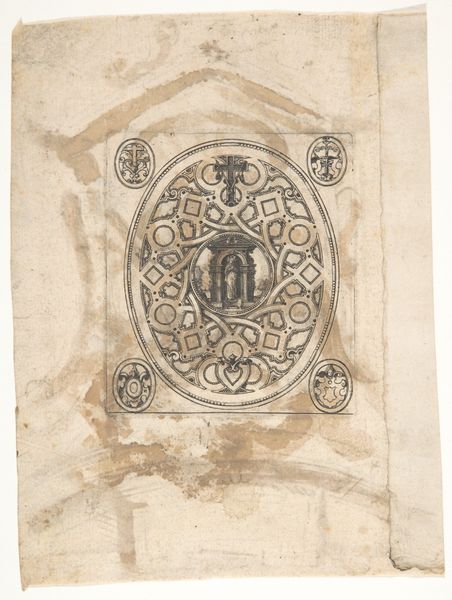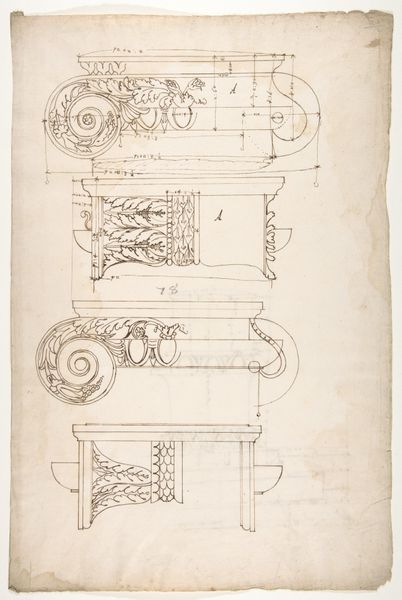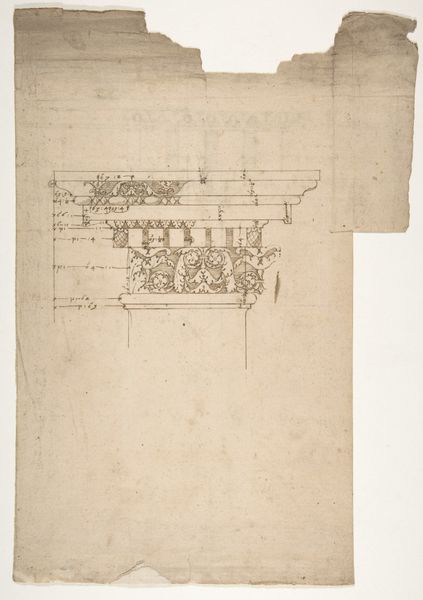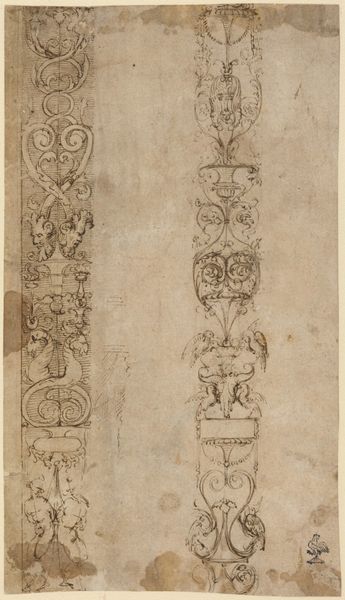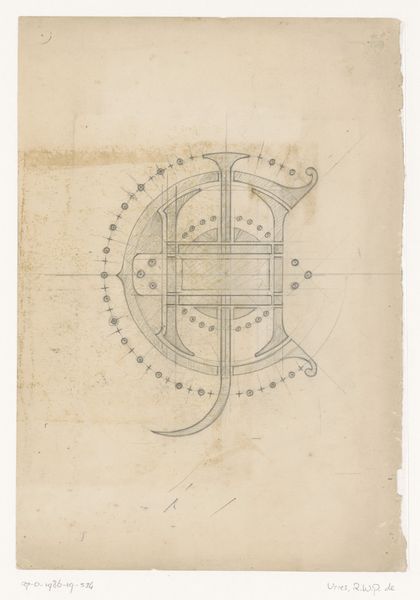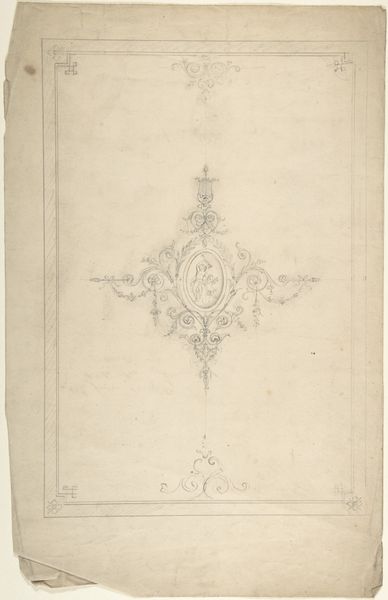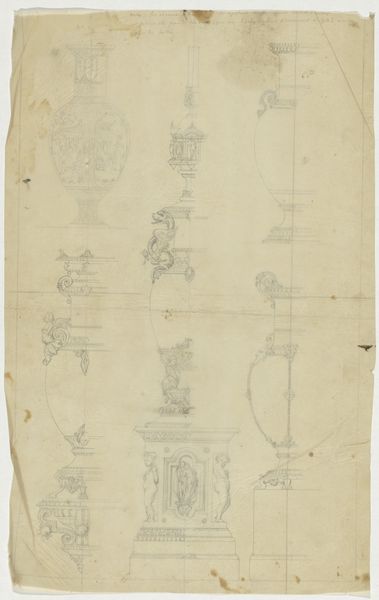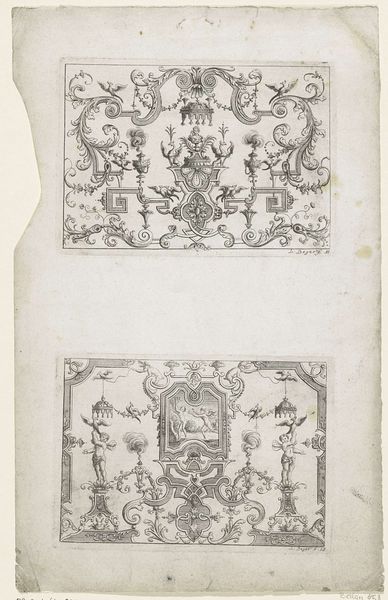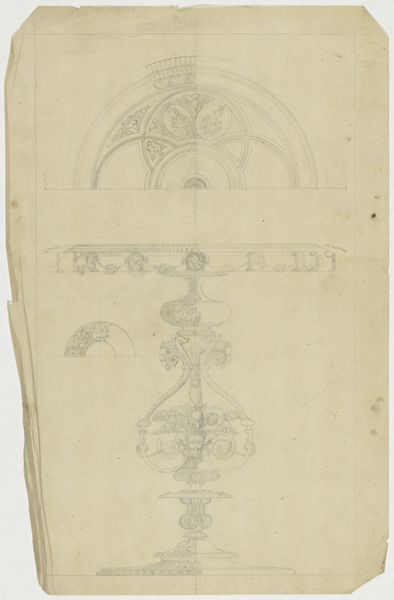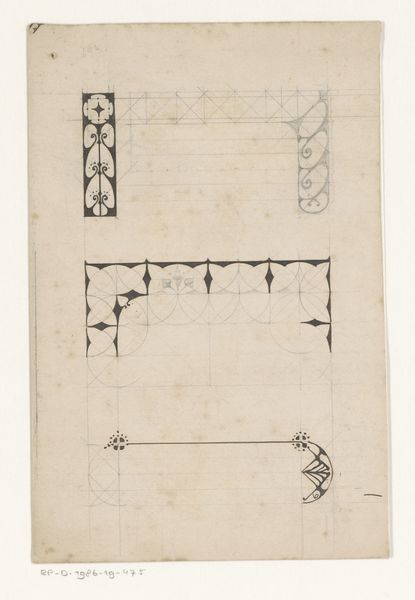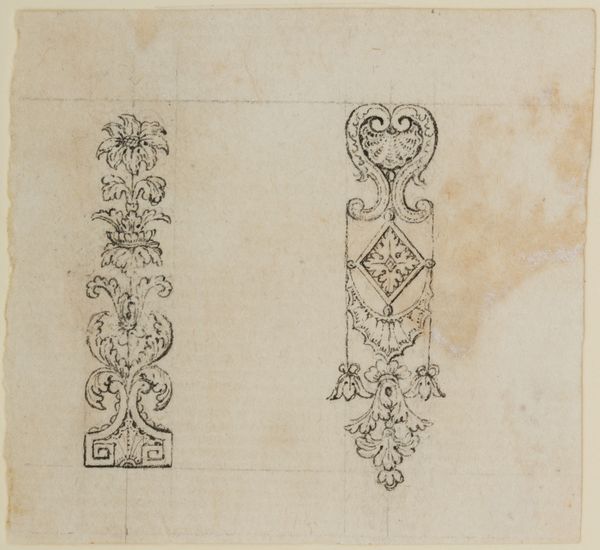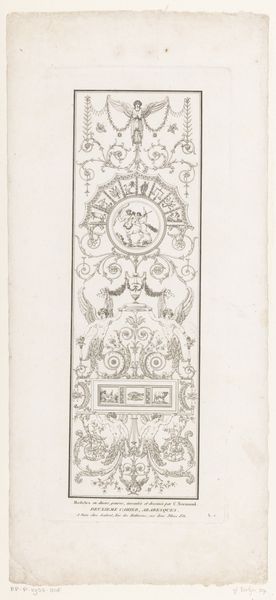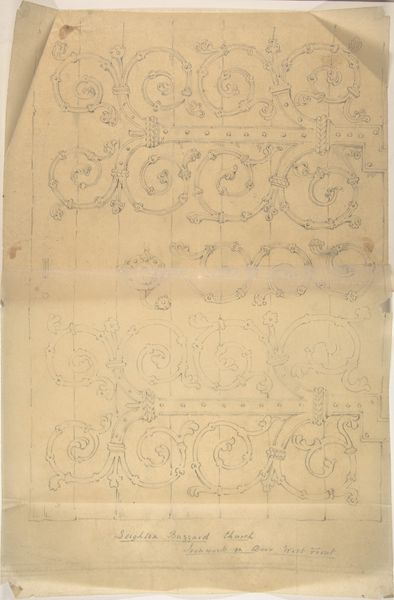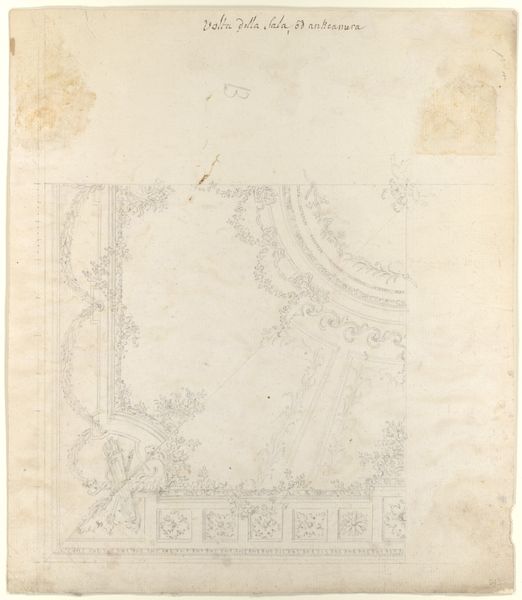
Temple of Portonus, capital, elevations and plan (recto) Unidentified, capital, elevation (verso) 1500 - 1560
0:00
0:00
drawing, print, paper, ink, architecture
#
drawing
# print
#
classical-realism
#
paper
#
11_renaissance
#
ink
#
history-painting
#
architecture
Dimensions: sheet: 17 3/16 x 11 1/4 in. (43.7 x 28.5 cm)
Copyright: Public Domain
Curator: Oh, there's such quiet grandeur in these lines. It's a glimpse into a mind meticulously studying and reimagining the past. Editor: Exactly! What strikes me immediately is the beautiful fragility of the paper itself. You can almost feel the hand that sketched these precise details centuries ago. We're looking at a drawing rendered in ink on paper, housed here at the Metropolitan Museum of Art. It's titled "Temple of Portonus, capital, elevations and plan," created sometime between 1500 and 1560. The artist, unfortunately, remains unidentified. Curator: Unidentified, yes, but certainly someone obsessed with classical forms! It feels less like a straightforward architectural record and more like a dance with antiquity, doesn't it? A loving attempt to understand the soul of Roman architecture. Editor: Absolutely. It’s not just documenting, it's interpreting. Consider how drawings like these circulated in the Renaissance, fueling the architectural discourse of the period. These plans became crucial in shaping architectural practices and defining classicism across Europe. Curator: You can see that influence, can’t you? Look at the way the light seems to play on the imagined surfaces. It's almost sculptural. It speaks volumes about how artists grappled with these forms. Editor: Absolutely, I am fascinated with how these drawings provided architects with access to Roman temples. For those who couldn't see the ruins directly, these drawings served as firsthand views of the Eternal City. It also underscores how even ruins had cultural and political value. Curator: The level of precision mixed with the delicate wash of the ink—there’s an almost yearning quality to it. You sense the artist trying to bridge the gap between past and present, between image and lived experience. The tactile nature of the paper contrasts sharply with the monumentality of the architectural forms it represents. Editor: It truly bridges technique, design, historical appreciation. It is wonderful to understand the socio-political value and the purpose art like this would serve in European society. Curator: Looking at this work ignites my interest in that critical and often blurry role of the artist. What should we record, what should we question and preserve? Editor: Precisely, and hopefully this experience helped all of our listeners consider just how the hand of the artist, coupled with the influence of a specific cultural memory, creates lasting impact on our perception of art and civilization.
Comments
No comments
Be the first to comment and join the conversation on the ultimate creative platform.
